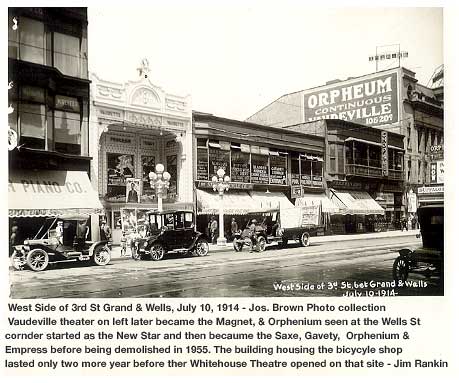Architectural Restoration and It’s Effect on Neighborhoods
“Die Baukunst ist erstarrte Musik,” said Johann Wolfgang von Goethe. “Architecture is frozen music.” More than any other art form, architecture is “performed” publicly, constantly, and affects everyone who shares that space, either residents, customers, or people just passing through. Public architecture is also a great leveler – it can be enjoyed equally by young and old, rich and poor alike.
Milwaukee has plenty of public spaces that were designed purely for function, where the chief objectives of design were for human comfort—air conditioning, ease and availability of parking, maximizing sales. They are called malls. Malls are comfortable. Malls are an efficient way to buy and sell. But malls are not beautiful from the outside, and nobody who passes by enjoys looking at them as such.
The older commercial areas of Milwaukee were designed to be beautiful inside and out. The facades of the Victorian shopping districts were richly ornamented, elegant, and distinctive. They were made for outdoor pedestrians, as opposed to the malls, which have no use for outdoor pedestrians. You drive to the mall and then walk. Victorian commercial architecture was designed to beckon people in from the street.
The precious few Victorian commercial districts left in Milwaukee need to be cultivated and encouraged so that we can learn from their beauty and wisdom. There are still a few left – National Ave., Kinnickirmic Ave., bits and pieces of 3rd St., and Brady St. Business owners who are inclined to risk some of their precious capital on beauty as well as function need to be encouraged and supported.

Older buildings that are restored to their Victorian facades give pedestrians something beautiful to look at as they pass by and actually encourage foot traffic. It encourages neighbors to take walks and enjoy this unique public art. It makes streets safer. It encourages nearby homeowners who live in historic buildings to appreciate their own buildings and restore them rather than modernize them.
The Fifties and Sixties and Seventies were brutal to Milwaukee’s Victorian treasury of commercial and residential buildings. Many were mutilated beyond recognition in the interest of modernity. Many were lost altogether. But even in the “enlightened” Nineties, Victorian buildings are being covered over, sided with vinyl, their trim and decoration removed, their gorgeous complexity simplified.
People who understand these things need to band together and encourage the emotional and financial risk-taking that is necessary for restoring the beauty and viability of the older neighborhoods. Beauty can co-exist with buildings that also function well for business, and the entire population will benefit. Public beauty inspires imagination, gives hope, and generates pride. These things build community.
